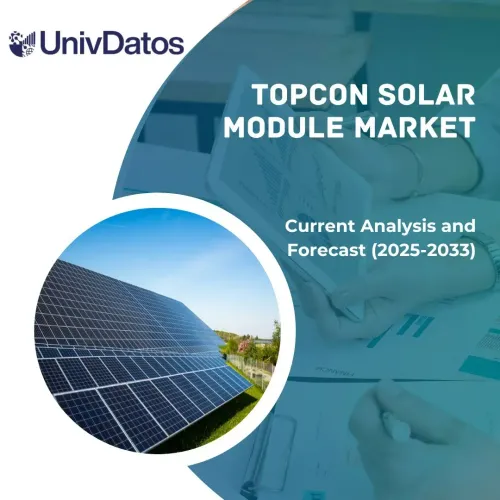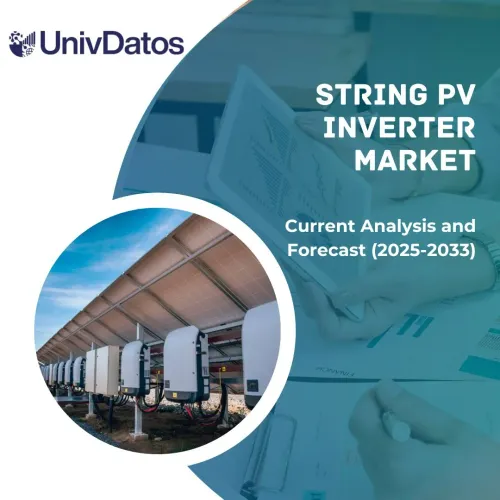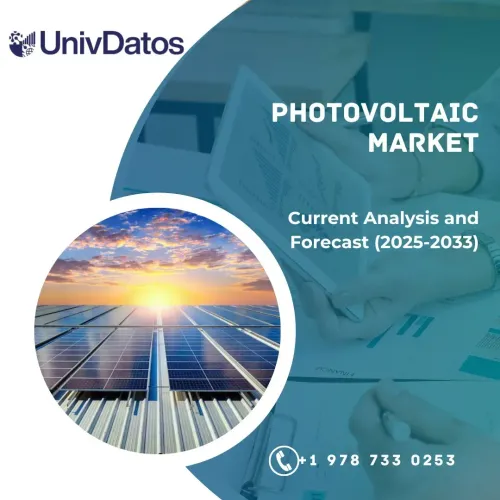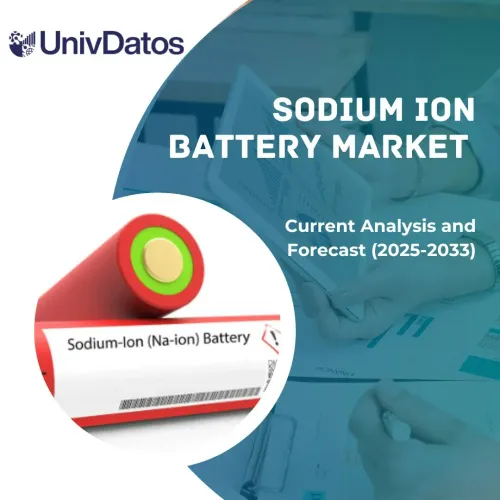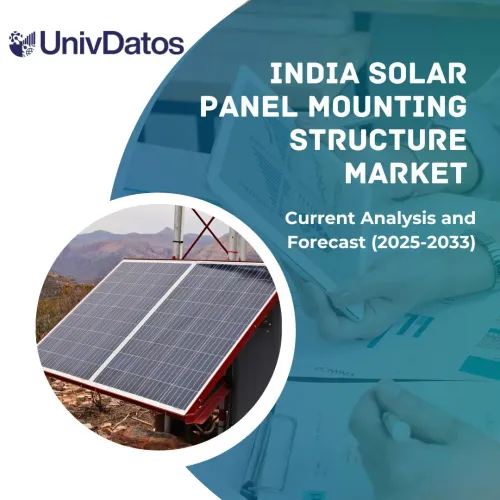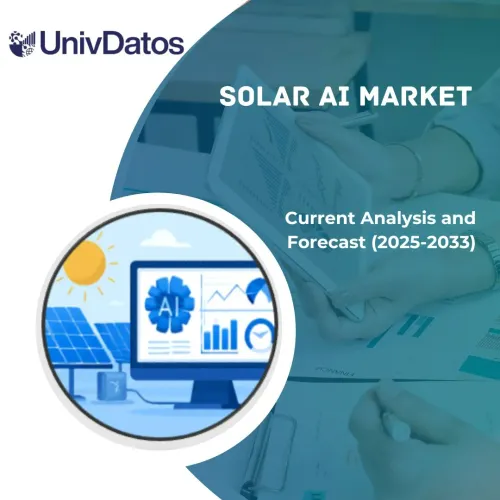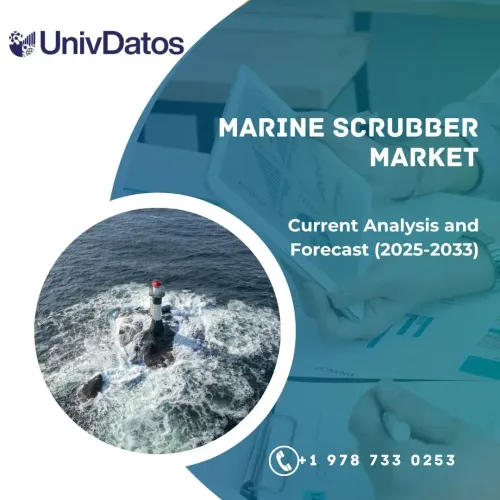Рынок плавучей ветроэнергетики: текущий анализ и прогноз (2022–2030)
Акцент на платформе (баржа, полупогружная платформа, плавучий ствол и платформа с натяжением (TLP)); Мощность установки (0,1–3 ГВт, 3,1–6 ГВт и более 6 ГВт); и регион/страна
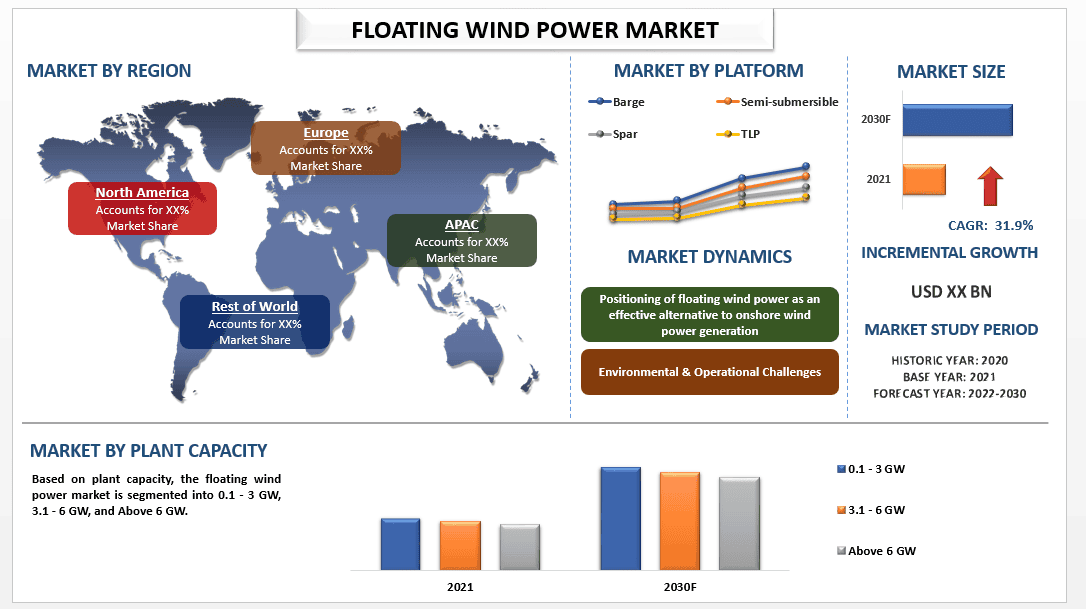
Ожидается, что мировой рынок плавучей ветроэнергетики будет расти стремительными темпами, примерно на 31,9% в течение прогнозируемого периода.Плавучая ветроэнергетика относится к технологии, которая позволяет развертывать ветряные турбины в глубоких прибрежных водах, где глубина воды превышает максимальную глубину, которую могут выдержать традиционные фундаменты с фиксированным основанием. Плавучие ветряные турбины монтируются на плавучей конструкции, такой как плавучий ствол, баржа, полупогружная платформа и другие, что позволяет им работать в глубоких водах. Где скорость ветра, как правило, выше и более стабильна, что увеличивает количество выработки электроэнергии. Кроме того, благодаря позиционированию плавучей ветроэнергетики как эффективной альтернативы наземной ветроэнергетике.Например, морская ветряная электростанция Hornsea Phase 2 станет крупнейшей ветряной электростанцией в мире, когда начнет работать в 2022 году. Она будет генерировать 1,3 ГВт экологически чистой энергии от 165 ветряных турбин мощностью 8 МВт, чего достаточно для обеспечения 1,4 миллиона домов в Великобритании.Кроме того, такие факторы, как упрощение ограничений цепочки поставок в отрасли компонентов ветроэнергетики, также способствуют росту рынка.
Siemens Gamesa Renewable Energy, S.A.; Vestas; MITSUBISHI HEAVY INDUSTRIES, LTD.; Principle Power Inc.; GENERAL ELECTRIC; Equinor ASA; Hexicon; Suzlon Energy Limited; Aker Offshore Wind; Naval Group являются одними из ключевых игроков на рынке. Несколько слияний и поглощений, а также партнерских отношений были предприняты этими игроками для предоставления клиентам высокотехнологичных и инновационных продуктов/технологий.
Представленные в отчете данные
«Ожидается, что среди платформ полупогружная платформа будет значительно расти в течение прогнозируемого периода»
В зависимости от платформы, рынок плавучей ветроэнергетики сегментирован на баржи, полупогружные платформы, плавучие стволы и платформы с натяжением (TLP). Ожидается, что полупогружная платформа будет значительно расти в течение прогнозируемого периода. Это в основном связано с тем, что полупогружные платформы обеспечивают устойчивость в неспокойном море, что важно для морских ветряных электростанций. Они также способны поддерживать большие ветряные турбины и другое оборудование, необходимое для производства электроэнергии ветром. Таким образом, такие факторы способствуют росту платформ, что увеличит рост рынка плавучей ветроэнергетики.
«Ожидается, что среди мощностей установок мощность 3,1–6 ГВт будет расти со значительным среднегодовым темпом роста в течение прогнозируемого периода»
В зависимости от мощности установок, рынок плавучей ветроэнергетики сегментирован на 0,1–3 ГВт, 3,1–6 ГВт и более 6 ГВт. Ожидается, что мощность 3,1–6 ГВт будет расти со значительным среднегодовым темпом роста в течение прогнозируемого периода. Это в основном связано с такими факторами, как более крупные проекты плавучей ветроэнергетики, как правило, более стабильны в неспокойных морских условиях, что повышает надежность производства энергии и увеличивает срок службы проекта. Кроме того, размер проекта снижает стоимость производства энергии, что помогает удовлетворить энергетические потребности большего населения или отрасли. Таким образом, такие факторы приводят к увеличению использования плавучей ветроэнергетики на рынке.
Охват отчета о рынке плавучей ветроэнергетики
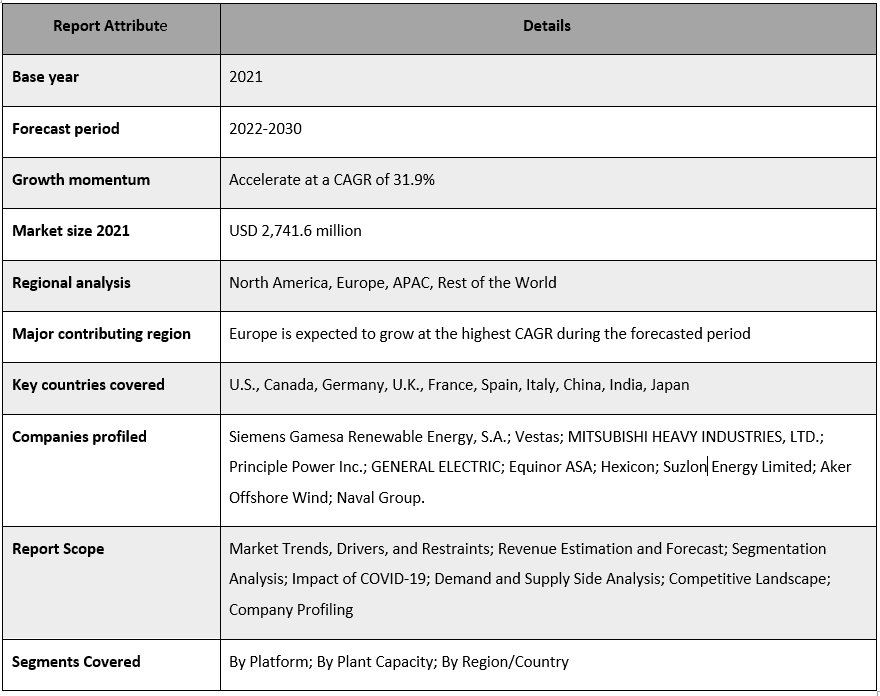
«Ожидается, что Европа будет расти со значительным среднегодовым темпом роста в течение прогнозируемого периода»
Ожидается, что в 2021 году Европа будет расти со значительным среднегодовым темпом роста в течение прогнозируемого периода. Это связано с благоприятными ветровыми условиями, потребностью в возобновляемой энергии, технологической экспертизой и другими факторами, доступными в регионе. Такие факторы способствуют увеличению использования плавучей ветроэнергетики в европейском регионе. Кроме того, Европа обладает лучшими ветровыми ресурсами в мире, особенно в прибрежных районах, таких как Балтийское море, Северное море, северо-восточная часть Атлантического океана, Средиземное море, Черное море и самые отдаленные регионы. Таким образом, заставляя Европейский союз ставить амбициозные цели по сокращению выбросов парниковых газов и увеличению доли возобновляемой энергии в своем энергетическом балансе. Кроме того, многие крупные игроки вкладывают средства в проекты плавучей ветроэнергетики, поскольку компании стремятся достичь своих целей устойчивого развития и уменьшить свой углеродный след.Например, в апреле 2022 года Repsol и Ørsted разработали проекты морской ветроэнергетики. Цель – установить к 2030 году плавучие морские ветровые электростанции общей мощностью 3 ГВт.
Причины купить этот отчет:
- Исследование включает в себя анализ размеров рынка и прогнозирования, подтвержденный аутентифицированными ключевыми экспертами отрасли.
- Отчет представляет собой краткий обзор общих показателей отрасли с первого взгляда.
- Отчет охватывает углубленный анализ выдающихся отраслевых коллег с основным упором на ключевые финансовые показатели бизнеса, портфели продуктов, стратегии расширения и последние разработки.
- Детальное изучение движущих сил, ограничений, ключевых тенденций и возможностей, преобладающих в отрасли.
- Исследование всесторонне охватывает рынок по различным сегментам.
- Углубленный анализ отрасли на региональном уровне.
Варианты настройки:
Мировой рынок плавучей ветроэнергетики может быть дополнительно настроен в соответствии с требованиями или любым другим сегментом рынка. Кроме того, UMI понимает, что у вас могут быть свои собственные бизнес-потребности, поэтому не стесняйтесь связаться с нами, чтобы получить отчет, который полностью соответствует вашим требованиям.
Содержание
Методология исследования для анализа рынка плавучей ветроэнергетики (2022–2030)
Анализ исторического рынка, оценка текущего рынка и прогнозирование будущего рынка мировой плавучей ветроэнергетики были тремя основными шагами, предпринятыми для создания и анализа внедрения плавучей ветроэнергетики в основных регионах мира. Для сбора исторических рыночных показателей и оценки текущего размера рынка были проведены исчерпывающие вторичные исследования. Во-вторых, для проверки этих данных были приняты во внимание многочисленные выводы и предположения. Кроме того, были проведены обширные первичные интервью с отраслевыми экспертами по всей цепочке создания стоимости мирового рынка плавучей ветроэнергетики. После предположения и проверки рыночных показателей посредством первичных интервью мы использовали подход сверху вниз/снизу вверх для прогнозирования полного размера рынка. После этого были приняты методы разбиения рынка и триангуляции данных для оценки и анализа размера рынка сегментов и подсегментов соответствующей отрасли. Подробная методология объясняется ниже:
Анализ исторического размера рынка
Шаг 1: Углубленное изучение вторичных источников:
Подробное вторичное исследование было проведено для получения исторического размера рынка плавучей ветроэнергетики из внутренних источников компании, таких какгодовые отчеты и финансовая отчетность, презентации о результатах деятельности, пресс-релизы и т. д.,и внешних источников, включаяжурналы, новости и статьи, правительственные публикации, публикации конкурентов, отраслевые отчеты, сторонние базы данных и другие заслуживающие доверия публикации.
Шаг 2: Сегментация рынка:
После получения исторического размера рынка плавучей ветроэнергетики мы провели подробный вторичный анализ для сбора исторических данных о рынке и доли различных сегментов и подсегментов для основных регионов. Основные сегменты включены в отчет, как платформа и мощность установки. Кроме того, был проведен анализ на уровне стран для оценки общего внедрения моделей тестирования в этом регионе.
Шаг 3: Факторный анализ:
После получения исторического размера рынка различных сегментов и подсегментов мы провели подробныйфакторный анализдля оценки текущего размера рынка плавучей ветроэнергетики. Далее мы провели факторный анализ с использованием зависимых и независимых переменных, таких как различные платформы и мощность установки плавучей ветроэнергетики. Был проведен тщательный анализ сценариев спроса и предложения с учетом основных партнерств, слияний и поглощений, расширения бизнеса и запуска продуктов в секторе рынка плавучей ветроэнергетики по всему миру.
Оценка и прогноз текущего размера рынка
Определение текущего размера рынка:Основываясь на практических выводах из вышеуказанных 3 шагов, мы пришли к текущему размеру рынка, ключевым игрокам на мировом рынке плавучей ветроэнергетики и долям рынка сегментов. Все необходимые доли процентов и разбивки рынка были определены с использованием вышеупомянутого вторичного подхода и были подтверждены посредством первичных интервью.
Оценка и прогнозирование:Для оценки и прогнозирования рынка веса были присвоены различным факторам, включая движущие силы и тенденции, ограничения и возможности, доступные для заинтересованных сторон. После анализа этих факторов были применены соответствующие методы прогнозирования, то есть подход сверху вниз/снизу вверх, для получения прогноза рынка на 2030 год для различных сегментов и подсегментов на основных рынках мира. Методология исследования, принятая для оценки размера рынка, охватывает:
- Размер рынка отрасли с точки зрения выручки (в долларах США) и скорость внедрения рынка плавучей ветроэнергетики на основных рынках внутри страны
- Все доли процентов, разбивки и разбиения сегментов и подсегментов рынка
- Ключевые игроки на мировом рынке плавучей ветроэнергетики с точки зрения предлагаемой продукции. Кроме того, стратегии роста, принятые этими игроками для конкуренции на быстрорастущем рынке
Проверка размера и доли рынка
Первичные исследования:Были проведены углубленные интервью с ключевыми лидерами мнений (KOL), включая руководителей высшего звена (CXO/VP, руководители по продажам, руководители по маркетингу, руководители по операционной деятельности, региональные руководители, руководители по странам и т.д.) во всех основных регионах. Результаты первичных исследований были затем обобщены, и был выполнен статистический анализ для подтверждения заявленной гипотезы. Данные первичных исследований были консолидированы с данными вторичных исследований, что позволило превратить информацию в практические выводы.
Разбивка первичных участников по различным регионам
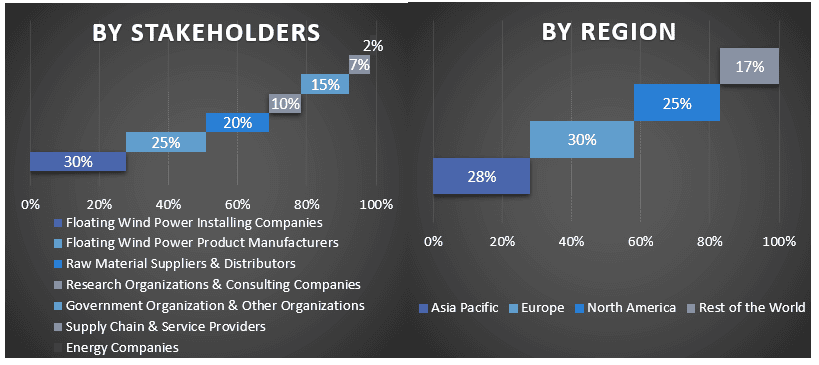
Инженерия рынка
Для завершения общей оценки рынка и получения точных статистических данных по каждому сегменту и подсегменту мирового рынка плавучей ветроэнергетики использовалась методика триангуляции данных. Данные были разделены на несколько сегментов и подсегментов после изучения различных параметров и тенденций в областях платформы и мощности электростанции на мировом рынке плавучей ветроэнергетики.
Основная цель исследования мирового рынка плавучей ветроэнергетики
В исследовании были определены текущие и будущие рыночные тенденции мирового рынка плавучей ветроэнергетики. Инвесторы могут получить стратегическую информацию для обоснования своих решений по инвестициям на основе качественного и количественного анализа, проведенного в исследовании. Текущие и будущие рыночные тенденции определили общую привлекательность рынка на региональном уровне, предоставив участникам отрасли платформу для освоения неиспользованного рынка, чтобы извлечь выгоду из преимущества первого игрока. Другие количественные цели исследований включают:
- Проанализировать текущий и прогнозируемый размер рынка плавучей ветроэнергетики в стоимостном выражении (USD). Кроме того, проанализировать текущий и прогнозируемый размер рынка различных сегментов и подсегментов
- Сегменты в исследовании включают области платформы и мощности электростанции.
- Определение и анализ нормативно-правовой базы для плавучей ветроэнергетики
- Анализ цепочки создания стоимости с учетом присутствия различных посредников, а также анализ поведения клиентов и конкурентов в отрасли.
- Проанализировать текущий и прогнозируемый размер рынка плавучей ветроэнергетики для основных регионов.
- Основные страны регионов, изученные в отчете, включают Азиатско-Тихоокеанский регион, Европу, Северную Америку и остальной мир.
- Профили компаний на рынке плавучей ветроэнергетики и стратегии роста, принятые игроками рынка для удержания позиций на быстрорастущем рынке
- Углубленный анализ отрасли на региональном уровне
Связанные Отчеты
Клиенты, купившие этот товар, также купили

